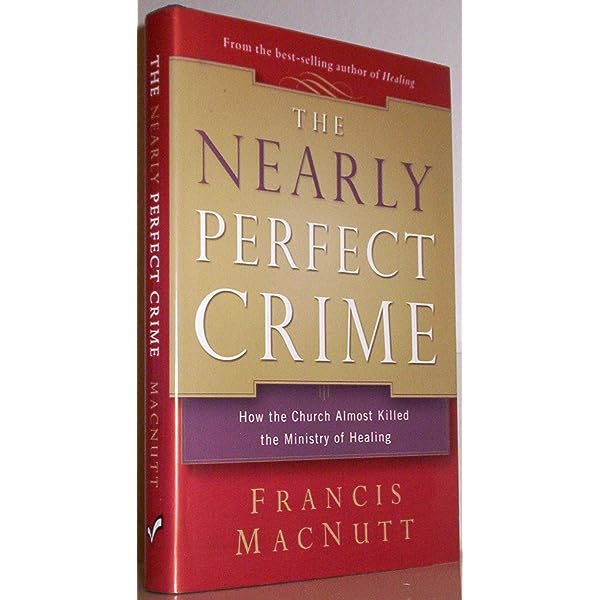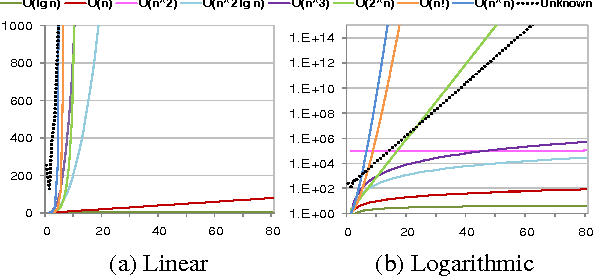Crime, suspense, and heist dramas have long held a fascination for audiences around the world, and few series have captured the imagination quite like “Money Heist” (original Spanish title
“La Casa de Papel”). Created by Álex Pina, this Spanish television phenomenon has garnered a dedicated global fan base. As the show’s gripping narrative unfolds across multiple seasons, viewers are left pondering whether “Money Heist” truly pulls off the perfect crime or if its execution falls short in some respects. In this review, we delve into the elements that make the series a standout, as well as areas where it may leave some viewers wanting more.
“From the mind of Álex Pina, “Money Heist” (also known as “La Casa de Papel”) has transcended cultural boundaries, captivating audiences worldwide with its thrilling heists and intricate characters. This Spanish television phenomenon has amassed a dedicated global fan base, and its enduring popularity begs the question: Does it truly pull off the perfect crime in the world of television, or are there areas where its execution might fall short?
As the show’s gripping narrative unfolds across multiple seasons, it weaves together a complex tapestry of emotions, loyalties, and moral dilemmas. Its characters are richly developed, and viewers find themselves immersed in their personal journeys, rooting for some and despising others. The series masterfully plays with our perceptions of right and wrong, leaving us pondering the fine line between hero and villain.
One of “Money Heist’s” standout features is its ability to keep viewers on the edge of their seats. With each heist more audacious than the last and unexpected twists lurking around every corner, it’s a rollercoaster of suspense and intrigue. The show’s brilliant use of flashbacks and foreshadowing deepens our understanding of the characters and their motivations, creating a story that’s as much about the human psyche as it is about the heists themselves.
Yet, like any complex narrative, “Money Heist” isn’t without its flaws. Some viewers may find certain plot developments or character choices less satisfying than others. The intricate web of relationships and shifting alliances can be overwhelming at times, and there’s a fine line between suspenseful and convoluted.
In this review, we embark on a journey through the streets of Madrid and delve into the elements that make “Money Heist” a standout in the world of television. We also examine those moments where the series may leave some viewers wanting more, offering a balanced perspective on this international sensation.”
If you’d like to dive deeper into this subject, there’s more to discover on this page: In a nutshell, what is Barry Lyndon all about, and why would it be …

The Art of the Heist
At its core, “Money Heist” is a meticulously planned and brilliantly executed heist that takes place in the Royal Mint of Spain and later, the Bank of Spain. The show excels in weaving an intricate narrative that details the planning, execution, and consequences of these heists. Each character in the ensemble cast has a role to play, and the thrill lies in witnessing how their individual strengths and weaknesses contribute to the success or failure of the heist.
“Money Heist” stands as a testament to the art of storytelling, where the heists themselves are merely the tip of the iceberg in a narrative brimming with complexity and intrigue. As the Royal Mint of Spain and the Bank of Spain become the battlegrounds for these meticulously planned operations, the show masterfully explores the human psyche and the moral dilemmas faced by both the robbers and the hostages.
One of the show’s distinguishing features is its ability to delve deep into the minds of its characters. Each member of the ensemble cast is more than just a participant in the heist; they are multi-dimensional individuals with their own backstories, motivations, and flaws. As viewers, we become intimately acquainted with the robbers, understanding their personal struggles, aspirations, and the reasons that led them to a life of crime. This character development adds layers of depth to the narrative, blurring the lines between right and wrong and inviting us to empathize with characters who, in any other context, might be considered criminals.
Furthermore, “Money Heist” isn’t content with just thrilling its audience with elaborate heists; it also delves into the psychology of power and control. The relationship between the robbers and the hostages evolves over time, leading to unexpected alliances, conflicts, and moments of genuine connection. The show explores themes of manipulation, trust, and the human capacity for change in the face of dire circumstances.
As the heists unfold, “Money Heist” keeps the tension at a fever pitch. The intricate planning and execution of each phase are presented with meticulous detail, drawing viewers into the suspenseful world of high-stakes theft. It’s a rollercoaster ride of twists and turns, where every decision and action has far-reaching consequences.
Ultimately, “Money Heist” transcends its heist premise to become a captivating exploration of human nature, morality, and the lengths people are willing to go to for their beliefs and ideals. The show’s ability to blend pulse-pounding action with profound character development and moral dilemmas is what has cemented its place as a global phenomenon, captivating audiences worldwide and sparking conversations about justice, ethics, and the gray areas that exist in the human experience.
To delve further into this matter, we encourage you to check out the additional resources provided here: [series review] Money Heist (season 1) | by Nguyen Hoang Bao …

Complex Characters
One of the standout aspects of “Money Heist” is its ensemble of complex characters, each with their own motivations and backstories. The series delves into the psychology of both the robbers and their hostages, making it a character-driven drama as much as a heist thriller. The enigmatic Professor, played by Álvaro Morte, is both the mastermind and moral compass of the heists, while Tokyo, portrayed by Úrsula Corberó, is a dynamic and compelling central character. These characters evolve over the course of the series, and their development adds depth to the narrative.
One of the standout aspects that elevates “Money Heist” to greatness is its ensemble of complex characters, each possessing a unique set of motivations, vulnerabilities, and gripping backstories. The series is not merely a heist thriller; it delves deeply into the intricate psychology of both the robbers and their hostages, transforming it into a character-driven drama of profound depth.
At the heart of the story lies the enigmatic Professor, brought to life with captivating brilliance by Álvaro Morte. He is not just the mastermind behind the meticulously planned heists but also the moral compass that guides the group through their audacious endeavors. His intellect and intricate strategies make him a formidable force, and yet, his internal moral struggles add layers of complexity that keep viewers enthralled.
Opposite the Professor is Tokyo, portrayed with remarkable dynamism by Úrsula Corberó. She emerges as the central character around whom much of the narrative revolves. Her character arc, from a bold and audacious criminal to a deeply conflicted individual, is one of the most compelling journeys in the series. Tokyo’s internal struggles and the emotional weight she carries add profound human dimensions to the high-stakes heists.
Moreover, the entire ensemble of characters undergoes significant evolution throughout the series. From Nairobi’s unwavering determination to Rio’s vulnerability, from Denver’s endearing charm to Helsinki’s unexpected depth, each character’s development adds layers to the narrative, making the viewer emotionally invested in their fates.
The beauty of “Money Heist” lies not just in the heists themselves but in the intricate relationships, loyalties, and betrayals that unfold within the group. These characters are more than just criminals; they are individuals with intricate psyches, complex pasts, and moral dilemmas. As the series progresses, their growth, inner conflicts, and shifting allegiances add depth to the storytelling, making “Money Heist” a masterful exploration of human nature amidst the chaos of high-stakes robberies.
In conclusion, “Money Heist” transcends the typical heist thriller by weaving a rich tapestry of multifaceted characters whose complexities drive the narrative. The Professor, Tokyo, and the entire ensemble captivate viewers with their evolution and inner struggles, transforming the series into a profound character-driven drama that delves deep into the human psyche. The result is a show that not only thrills with its heists but also resonates on a deeply emotional level.
Should you desire more in-depth information, it’s available for your perusal on this page: yawp_v2_open_pdf.pdf

High-Stakes Drama
“Money Heist” excels in creating a high-stakes atmosphere where every decision, every move, and every betrayal has consequences. The constant tension and suspense keep viewers on the edge of their seats, making it a binge-worthy experience. The show is not afraid to take risks, and unexpected plot twists and character developments are par for the course.
“Money Heist” is a masterclass in maintaining a high-stakes atmosphere throughout its narrative. From the moment the heists begin, the series unfurls a relentless tension that keeps viewers entranced. Every decision made by the characters, whether in the planning of the heist or in their interpersonal relationships, carries weighty consequences. This sense of impending doom and the palpable consequences of actions create an unyielding tension that permeates each episode.
The show’s ability to sustain this tension is a testament to its storytelling prowess. Viewers find themselves immersed in a world where trust is a precious commodity, and betrayals are a constant threat. This ever-present danger makes “Money Heist” a rollercoaster ride of emotions, ensuring that even the most minor of plot developments can send shockwaves through the narrative.
Moreover, “Money Heist” is unafraid to take bold risks. It thrives on the unexpected, and viewers quickly learn that no character is safe from the repercussions of their choices. This willingness to push boundaries and subvert expectations adds an exhilarating layer to the viewing experience. Each unexpected plot twist and character development serves as a reminder that in this world of high-stakes crime, nothing is certain, and the line between hero and villain is malleable.
This constant state of flux and unpredictability is what makes “Money Heist” truly binge-worthy. It’s a series that demands the viewer’s full attention, rewarding them with a rollercoaster of emotions, jaw-dropping revelations, and a deep exploration of the human condition under extreme circumstances. As viewers watch the heists unfold and the characters evolve, they become active participants in the high-stakes game, making “Money Heist” an unforgettable and addictive television experience.
Additionally, you can find further information on this topic by visiting this page: The Great Transformation

Social Commentary
Beneath the thrilling heist premise, “Money Heist” also offers social and political commentary. It explores themes such as income inequality, the abuse of power, and the consequences of rebellion. The masks worn by the robbers, each bearing the name of a famous city, symbolize their struggle against oppressive systems, adding a layer of depth to the narrative.
“Beneath the thrilling heist premise that keeps viewers at the edge of their seats, “Money Heist” unfolds as a multi-layered narrative with profound social and political commentary. It serves as more than just an adrenaline-pumping heist story; it’s a mirror reflecting some of the most pressing issues of our time.
One of the central themes that “Money Heist” tackles head-on is income inequality. The stark contrast between the robbers, who represent the marginalized and oppressed, and the elite who control society’s wealth, resonates strongly with viewers. This stark division is not just a plot device but a reflection of real-world disparities, inviting us to contemplate the ever-widening gap between the haves and the have-nots.
The abuse of power is another theme that looms large in the series. The heist itself is a rebellion against the oppressive forces that wield authority over the lives of the working class. As we witness the heist unfolding, we are forced to confront the implications of unchecked power and the lengths to which individuals are willing to go when pushed to the brink.
Rebellion and its consequences form the heart of “Money Heist.” The robbers’ actions are not merely driven by greed; they are a desperate response to a system that has failed them. Through their struggles, we are compelled to question the ethics of rebellion, the blurred lines between heroism and criminality, and the toll such acts take on those who dare to defy the status quo.
The masks worn by the robbers, each bearing the name of a famous city, are not just disguises; they are symbols of resistance. They represent a collective fight against oppressive systems, each city a testament to the global reach of their cause. These masks add a layer of depth to the narrative, serving as a visual reminder of the robbers’ mission to challenge the establishment and rewrite their own destinies.
In essence, “Money Heist” is a heist of both wealth and meaning. It challenges us to examine the world around us, to question the systems that govern our lives, and to consider the consequences of our actions. Beyond the adrenaline rushes and plot twists, it invites us to ponder the enduring relevance of the issues it addresses, making it not just a thrilling series but a thought-provoking one that lingers in our minds long after the credits roll.”
Additionally, you can find further information on this topic by visiting this page: The Global Risks Report 2022

Pacing and Plot Complexity
While “Money Heist” has achieved critical acclaim, some viewers may find fault in its pacing and plot complexity. The series is known for its intricate narrative structure, which involves flashbacks and nonlinear storytelling. While this adds depth, it can also be confusing at times, requiring viewers to pay close attention to keep track of the timeline and character arcs.
“Money Heist” undeniably shines as a remarkable series, but it’s not without its share of critiques, particularly in the realms of pacing and plot complexity. The show’s intricate narrative structure, characterized by flashbacks and nonlinear storytelling, is both its strength and its potential stumbling block.
The use of flashbacks and nonlinear storytelling is a double-edged sword. On one hand, it enriches the story by providing essential context and backstory for the characters. These narrative devices allow viewers to delve deep into the minds of the robbers and hostages, unraveling their motivations and personal histories. It’s an artful way of humanizing the characters and making them more relatable.
However, the complexity of this storytelling style can be a challenge for some viewers. “Money Heist” demands a high level of engagement and attention to detail. The non-linear progression of events, coupled with frequent shifts between past and present, can be disorienting. Viewers need to invest time and mental effort to keep track of the evolving timeline and character arcs, which may deter those seeking a more straightforward narrative.
Additionally, the intricacy of the plot can occasionally result in pacing issues. Some viewers have noted that certain episodes or storylines feel slower in comparison to the adrenaline-fueled heists. The show’s commitment to character development and exploring the moral dilemmas of the characters can, at times, divert focus from the core action. While this depth adds layers to the story, it may not align with the expectations of viewers primarily seeking high-octane heist sequences.
Nonetheless, it’s important to recognize that these aspects of “Money Heist” are a deliberate creative choice. The show’s creators use complexity and nonlinear storytelling to challenge conventional narrative structures and engage viewers on an intellectual level. It encourages discussions and analysis, prompting audiences to piece together the puzzle of the story.
In essence, “Money Heist” is a series that demands active participation from its viewers. While some may find the pacing and plot complexity challenging, others appreciate the depth and intellectual stimulation it provides. Ultimately, it’s a testament to the show’s ambition and willingness to push the boundaries of storytelling, offering a unique viewing experience that leaves a lasting impact on those willing to embark on its intricate journey.
To delve further into this matter, we encourage you to check out the additional resources provided here: Dead Ground: The New Poe and Bradshaw Thriller by M.W. Craven …

The Perfect Crime or Imperfect Execution?
As with any critically acclaimed series, opinions on “Money Heist” are divided. For some, it’s a masterpiece of heist storytelling, filled with complex characters, social commentary, and pulse-pounding suspense. For others, the plot complexity and pacing can be challenging to navigate. However, what is undeniable is the series’ global impact and the dedicated following it has amassed.
As with any critically acclaimed series, “Money Heist” has sparked a wide spectrum of opinions and discussions among viewers and critics alike. It stands as a testament to the diversity of tastes and perspectives in the world of entertainment.
For many, “Money Heist” is unquestionably a masterpiece of heist storytelling. Its intricate plot, rich character development, and social commentary resonate deeply with this audience. They find themselves engrossed in the enigmatic Professor’s elaborate schemes, emotionally invested in the struggles and triumphs of the robbers, and captivated by the series’ exploration of societal issues. The pulse-pounding suspense and unexpected twists keep them on the edge of their seats, eagerly awaiting the next revelation.
However, it’s important to acknowledge that the series’ intricate plot can be a double-edged sword. For some viewers, the complexity of the narrative can be challenging to navigate. The rapid shifts in perspective, the numerous subplots, and the intricate timelines may require careful attention to detail. This can lead to a sense of confusion or the need for multiple viewings to fully grasp the nuances of the story.
Nevertheless, what remains undeniable is the global impact and dedicated following that “Money Heist” has amassed. It has transcended cultural and linguistic boundaries to become a worldwide phenomenon. Its characters, catchphrases, and iconic red jumpsuits have become part of popular culture, and its influence extends far beyond the screen.
The series has ignited discussions about themes such as resistance, inequality, and the consequences of societal structures. It has given voice to issues that resonate with people from diverse backgrounds, making it not just a source of entertainment but also a platform for social commentary.
Ultimately, the divided opinions on “Money Heist” underscore the richness and complexity of the series. It is a testament to the power of storytelling to provoke thought, elicit emotions, and spark conversations. Regardless of where one stands on the spectrum of opinions, there’s no denying that “Money Heist” has left an indelible mark on the world of television, and its impact is likely to endure for years to come.
Explore this link for a more extensive examination of the topic: Why is there no such a perfect crime? – Quora

Conclusion
In the end, whether “Money Heist” is the perfect crime or an imperfect execution depends on individual preferences and tastes. What’s certain is that it has left an indelible mark on the world of television, redefining the heist genre and introducing viewers to a world where the line between hero and villain is blurred. Whether you’re drawn in by its high-stakes drama or intrigued by its social themes, “Money Heist” is a series that invites discussion and debate, making it a standout in contemporary television.
In the vast landscape of television, “Money Heist” stands as a polarizing figure, eliciting diverse opinions and sparking spirited debates among viewers. Whether it’s hailed as the perfect crime or criticized for its imperfections ultimately hinges on individual preferences and tastes, underscoring the subjectivity of storytelling appreciation. The beauty of art lies in its ability to resonate differently with each observer, and “Money Heist” is no exception.
For those who find themselves ensnared by its narrative web, “Money Heist” represents a near-flawless execution of a heist drama. Its labyrinthine plot, brimming with unexpected twists and morally ambiguous characters, is a testament to the series’ ability to keep audiences engaged and guessing. The character development, particularly the transformation of the enigmatic Professor, is seen as a triumph of storytelling, and the show’s knack for unearthing the complexities of human nature resonates profoundly.
Conversely, those who perceive “Money Heist” as an imperfect execution often point to its plot intricacies, pacing, or character choices as areas of critique. Some viewers may find themselves grappling with the series’ nonlinear storytelling, while others might argue that certain character decisions lack coherence or believability. Such critiques, while valid, also underscore the notion that art is inherently subjective.
However, beyond the realm of personal preference, “Money Heist” has undeniably left an indelible mark on the television landscape. It has reshaped the heist genre, breathing new life into a storytelling archetype that often teeters on cliché. By blurring the line between hero and villain, the series has challenged conventional morality, inviting viewers to explore the gray areas of human behavior. This moral ambiguity has sparked discussions on ethics, power dynamics, and the consequences of rebellion, transcending the boundaries of traditional crime dramas.
Moreover, “Money Heist” has taken the global stage by storm, transcending language barriers and resonating with audiences from diverse cultural backgrounds. Its characters, symbols, and themes have become cultural touchstones, fostering a sense of shared experience among viewers worldwide. The show’s widespread popularity has reaffirmed the global appeal of well-crafted, emotionally charged storytelling.
In the end, the legacy of “Money Heist” lies not solely in its pursuit of perfection but in its ability to provoke conversation and debate. It encourages viewers to examine their own moral compasses, challenging preconceived notions of right and wrong. Whether you are drawn in by its high-stakes drama, intrigued by its social themes, or critical of its execution, “Money Heist” stands as a testament to the power of television to ignite discourse and leave an enduring impact on the cultural landscape. It exemplifies the notion that, in the world of art, there are no definitive verdicts—only a cacophony of voices engaging in a perpetual dialogue.
Additionally, you can find further information on this topic by visiting this page: Bernie Madoff: Who He Was, How His Ponzi Scheme Worked
More links
To expand your knowledge on this subject, make sure to read on at this location: Bernie Madoff: Who He Was, How His Ponzi Scheme Worked
